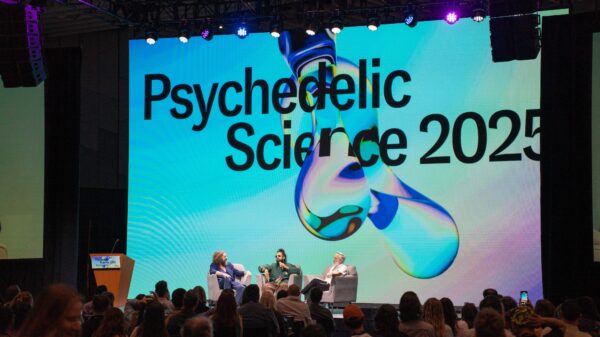A new study has conclusively determined that an ancient Egyptian mug was once used to consume a bizarre brew made of psychoactive substances, human body fluids, and alcohol.
A state-of-the-art chemical analysis of one of the world’s only remaining “Bes” mugs, led by a University of South Florida (USF) professor, found traces of peganum harmala (Syrian rue) and blue water lily (Egyptian lotus). It is understood that these substances were used to induce heightened euphoric states for ritual purposes and enlightenment. The lotus flower, in particular, is often depicted in ancient art and hieroglyphs.
Along with these two psychedelic plants, Prof. Davide Tanasi and his fellow researchers identified proteins from blood, vaginal mucus, and fermented alcohol made from fruit.
The cup, dating back to about 200 BC, has been housed at the Tampa Museum of Art since 1984. Researchers had speculated about its historical use, but didn’t have the concrete evidence they do now after a groundbreaking study was published in the Nature journal Scientific Reports on Nov. 14.
“For the first time, we were able to identify all the chemical signatures of the components of the liquid concoction contained in the Tampa Museum of Art’s Bes mug,” Tanasi said in a USF press release, “including the plants used by Egyptians, all of which have psychotropic and medicinal properties.”

Bes is a mystical Egyptian deity worshipped for his fertility, healing, protective and magical characteristics. Photo credit: Tampa Museum of Art
Read more: Quebec religious group demands ceremonial psilocybin access, files lawsuit
Read more: Pedal to the metal! We’ve got way too many mushrooms in the trunk
Analysis & Nature study validate theories held by Egyptologists
These mugs have been a subject of extensive study and debate among scholars for several years. Many had speculated that they served some kind of ritual or religious purpose. Their past usage had been largely a mystery, until now.
From an archaeological standpoint, this research helps inform academics about the role of Bes in Egyptian mysticism. Others have analyzed the composition of the mugs, but were not as successful.
“This is the first time scientific evidence has directly confirmed the use of psychedelics in ancient Egyptian rituals,” study author Enrico Greco told Newsweek on Monday.
“While there have been previous hypotheses based on iconography or texts, this study provides physical evidence of the deliberate use of psychotropic substances in ceremonial practice.”
According to the Rosicrucian Egyptian Museum in California, many who worshipped Bes in ancient Egypt were newlyweds that viewed him as the god of fertility and childbirth. Pregnancy in the ancient world was a risky endeavour, and they believed they would be blessed through their admiration of the deity.
The Bes mug is currently on display at the Tampa Museum of Art’s “Prelude: An Introduction to the Permanent Collection” exhibit.
Traces of a drug cocktail in a 2nd century BCE Egyptian vase…
Peganum harmala — MAO inhibitors harmine & harmaline.
Blue Lotus (Nimphaea caerulea) — psychoactive aporphine alkaloids (e.g. apomorphine & nuciferine)
Fermented fruit-based liquid.https://t.co/Acx8AzDNba pic.twitter.com/0lmTwWiA9E
— Andrew Gallimore (@alieninsect) November 15, 2024
rowan@mugglehead.com













